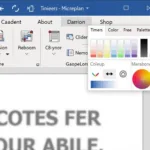Creating a rainbow of colors with food coloring is easier than you might think. Whether you’re frosting a cake, dyeing Easter eggs, or experimenting with DIY crafts, food coloring opens up a world of colorful possibilities. This guide explores everything you need to know about mixing food coloring to achieve the perfect hues for your projects.
Understanding the Color Wheel
Before diving into mixing, let’s revisit the basics of color theory and the color wheel. The color wheel is a visual representation of primary, secondary, and tertiary colors.
- Primary Colors: Red, yellow, and blue are the foundation. These colors cannot be created by mixing other colors.
- Secondary Colors: Mixing two primary colors in equal amounts creates secondary colors. Red and yellow make orange, red and blue make purple, and yellow and blue make green.
- Tertiary Colors: These colors are achieved by mixing a primary color with an adjacent secondary color. Examples include red-orange, yellow-green, and blue-violet.
Understanding these relationships will help you predict the outcome of mixing different food coloring shades.
Essential Food Coloring Tips
Follow these tips to achieve vibrant and accurate colors:
- Start with a White Base: Whenever possible, use a white base for your creations, such as white frosting, white glue, or white playdough. This allows the colors to appear brighter and truer.
- Add Color Gradually: Always start by adding a small amount of food coloring at a time, mixing thoroughly between each addition. It’s easier to darken a color than to lighten it.
- Gel Food Coloring vs. Liquid Food Coloring: Gel food coloring tends to be more concentrated and yields more vibrant colors compared to liquid food coloring. It’s also less likely to alter the consistency of your creations.
How to Make Orange with Food Coloring
Orange is a vibrant and cheerful color that can be easily achieved with food coloring. Simply combine:
- Red Food Coloring: Start with a small amount of red.
- Yellow Food Coloring: Gradually add yellow, a little at a time, until you reach the desired shade of orange.
Expert Insight: “Remember, the ratio of red to yellow will determine the final shade of orange. More red will create a reddish-orange, while more yellow will result in a yellowish-orange,” says renowned color specialist, Emily Carter.
Creating Purple with Food Coloring
Purple, a color often associated with royalty and creativity, can be created by mixing:
- Blue Food Coloring: Begin with a base of blue.
- Red Food Coloring: Slowly incorporate red until you achieve the desired purple shade.
Pro Tip: The intensity of the purple will depend on the ratio of blue to red. For a bluer purple, use more blue. For a redder purple, use more red.
How to Make Green Food Coloring
Green, the color of nature and harmony, can be mixed using:
- Yellow Food Coloring: Start with a base of yellow.
- Blue Food Coloring: Gradually add blue, mixing well, until you achieve the desired green.
Expert Insight: “Be cautious when mixing green as it’s easy to end up with a muddy color if you add too much blue too quickly,” advises color expert, David Miller.
Exploring Pastel Colors
how to make pastel colors with food coloring are soft and soothing, perfect for creating a delicate and elegant look. To achieve pastel shades, simply:
- Create the Desired Color: Follow the instructions above to mix your desired color.
- Add White: Gradually incorporate white food coloring or a white base (like white frosting) to lighten the color and create a pastel hue.
Mixing Brown Food Coloring
While brown food coloring is available, you can also create your own unique shades of brown by combining:
- Red, Yellow, and Blue: Start with small amounts of all three primary colors.
- Adjust Ratios: Adjust the ratios to achieve the desired brown. More red will create a warmer brown, while more blue will result in a cooler brown.
Conclusion
With a little practice and these simple guidelines, you can master the art of how to make colors with food coloring. Don’t be afraid to experiment and explore different color combinations to unleash your creativity and add a vibrant touch to your culinary and craft projects.
FAQs
Can I use natural food coloring instead of artificial food coloring?
Yes, you can use natural food coloring derived from fruits, vegetables, and spices. However, keep in mind that natural food coloring may not be as vibrant or long-lasting as artificial options.
How do I avoid streaks when coloring frosting or batter?
To avoid streaks, make sure your food coloring is fully incorporated. Use a toothpick to add the color, and mix thoroughly with a spatula or electric mixer until the color is evenly distributed.
What should I do if I add too much food coloring?
If you accidentally add too much food coloring, you can try to salvage the mixture by gradually adding more of the white base. If that doesn’t work, you may need to start over.
Can I mix different brands of food coloring?
Yes, you can generally mix different brands of food coloring. However, it’s always a good idea to test the colors on a small sample first, as concentrations may vary slightly between brands.
What colors make orange food coloring?
What colors make orange food coloring? It’s simple, red and yellow!
What colors make purple in food coloring?
What colors make purple in food coloring? You can create this royal hue using blue and red food coloring.
What food coloring colors make purple?
What food coloring colors make purple? Just like the previous question, combining blue and red will give you various shades of purple.
For any assistance, please contact us at 0373298888 or [email protected]. Visit us at 86 Cầu Giấy, Hà Nội. We have a 24/7 customer support team ready to assist you.
